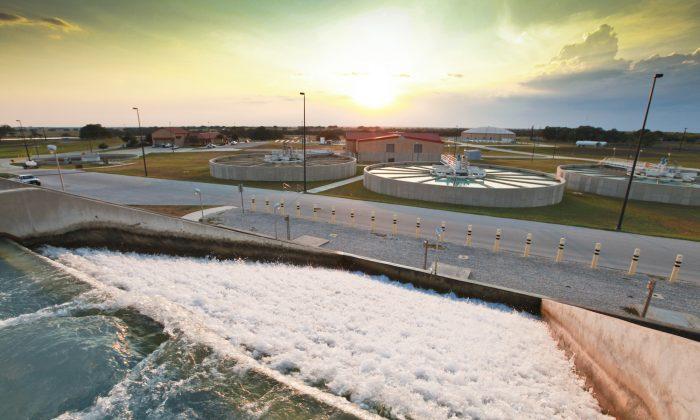LUBBOCK, Texas—The torrential storms of last month essentially ended one of Texas’s worst-ever droughts, but much of the excess water has already flowed into the Gulf of Mexico or will evaporate by year’s end.
With a wary eye toward the next prolonged dry streak that inevitably will come, some think that expanding the use of underground aquifers may help slake the thirst of Texas’s rapidly growing population.
Three trillion gallons of water gushed from swollen Texas rivers into the Gulf of Mexico in May, and another two trillion gallons will likely evaporate from state reservoirs by year’s end. Combined, the lost water would be enough to serve Texas’s booming population for an entire year.
If widely implemented, aquifer storage and recovery would be among the major additions to the state’s water infrastructure since scores of reservoirs were built following the historic drought of the 1950s.
Aquifers
Aquifers are naturally occurring underground layers of rock that can hold vast amounts of water, which can be brought to the surface by pumping or through natural means, such as springs. Some are replenished easily through natural means, such as streams and seepage, while others recharge more slowly but can be replenished manually with pumped-in water. One major benefit of aquifers is that their water doesn’t evaporate, which makes them an ideal water source in warmer climates.
Texas has only three of the nation’s 133 aquifer storage and recovery facilities, but studies are underway to determine where new ones could be built in the state, which had its driest year ever in 2011, causing lakes to dry up and forcing many cities to heavily restrict water use.
“I think it will be a long time before (water) professionals forget about the drought,” said Bill Mullican, a former administrator with the Texas Water Development Board who recently helped write legislation that removes hurdles to building the aquifer storage and pumping facilities. “I think the drought is going to have a significant effect on our long-term planning.”
The pumping stations, which can inject water into aquifers during wet times and withdraw it when needed, have been widely used in warm climates such as Las Vegas and Tampa, where precious amounts of surface water would be lost to evaporation.
Population
In Texas—the nation’s second most populous state—aquifer pumping represents a relatively quick option to help meet the fast-growing demand for water. While reservoir construction can take decades to complete, aquifer facilities require about half a decade.
And for Texas, time is a major factor.
Its population is expected to grow by 82 percent in the next half century, and its water needs by more than 40 percent by 2060. With enough pumping facilities, the state could draw on an estimated storage capacity of about 163 trillion gallons—or more than 15 times its current drinking water reservoir capacity—in aquifers, according to water development board data.
San Antonio is one of the few places in Texas that uses the method. The San Antonio Water System paid $210 million to open its facility, which for the last decade has been pumping water from the naturally recharging Edwards Aquifer to another aquifer about 20 miles away through an underground, 60-inch pipe. The Carrizo Aquifer, which lies deeper than the Edwards and where the water moves more slowly, has taken in about 1 billion gallons of water since the start of May.
At least 20 Texas water entities are considering the idea, including the one for Tarrant County, which is home to about 1.7 million residents and the city of Fort Worth.





